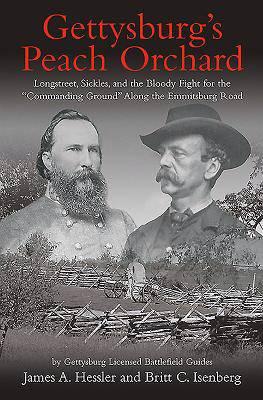
- Afhalen na 1 uur in een winkel met voorraad
- Gratis thuislevering in België vanaf € 30
- Ruim aanbod met 7 miljoen producten
- Afhalen na 1 uur in een winkel met voorraad
- Gratis thuislevering in België vanaf € 30
- Ruim aanbod met 7 miljoen producten
Zoeken
Gettysburg’S Peach Orchard
Longstreet, Sickles, and the Bloody Fight for the “Commanding Ground” Along the Emmitsburg Road
James A. Hessler, Britt Isenberg
Hardcover
€ 39,45
+ 78 punten
Omschrijving
One of the most influential actions of the second day of battle at Gettysburg occurred nearly one mile west of Little Round Top in farmer Joseph Sherfy’s peach orchard. Hessler and Isenberg combine the military aspects of the fighting with human interest stories.
Specificaties
Betrokkenen
- Auteur(s):
- Uitgeverij:
Inhoud
- Aantal bladzijden:
- 408
Eigenschappen
- Productcode (EAN):
- 9781611214550
- Verschijningsdatum:
- 31/07/2019
- Uitvoering:
- Hardcover
- Afmetingen:
- 236 mm x 188 mm
- Gewicht:
- 698 g

Alleen bij Standaard Boekhandel
+ 78 punten op je klantenkaart van Standaard Boekhandel
Beoordelingen
We publiceren alleen reviews die voldoen aan de voorwaarden voor reviews. Bekijk onze voorwaarden voor reviews.








